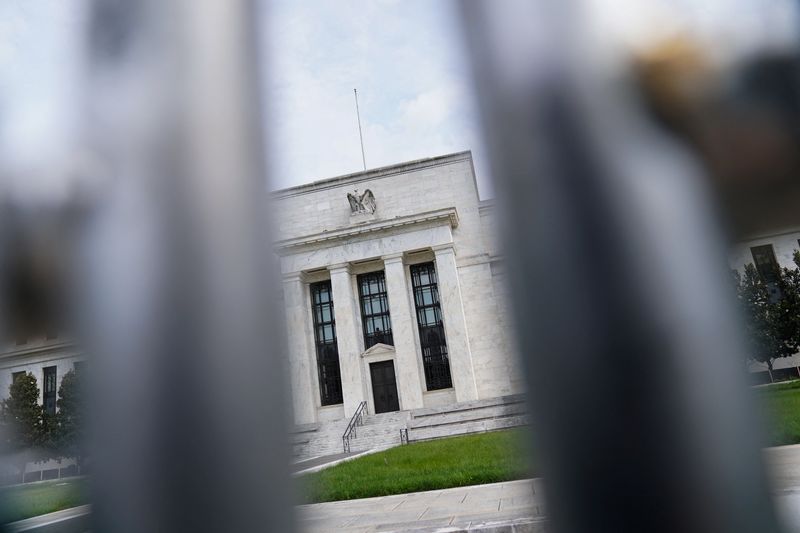(Bloomberg) -- Federal Reserve officials are about to put numbers on the “pain” they’ve been warning of in recent weeks when they publish new projections for the economy, which could show a substantial rise in interest rates and unemployment ahead as the estimated price tag for reducing inflation.
The US central bank will release its latest quarterly projections Wednesday following a two-day policy meeting in Washington, where officials are expected to raise their benchmark rate by three-quarters of a percentage point for the third time in a row.
Such a move would lift rates to levels not seen since before the 2008 financial crisis. The next phase of the tightening cycle carries greater risks, which will probably be reflected in their revised projections.
Inflation has moderated little since the last forecast round in June, and that has pushed policy makers into a more aggressive stance. They’re also increasingly doubting old estimates of the relationship between unemployment and inflation, which may be part of the reason why they’re now inclined to aim for a bigger slowdown in economic activity.
“The higher trajectory for interest rates is going to have a bigger impact, certainly, on unemployment. We see the unemployment rate coming up closer to 4.5% in the Fed’s new forecast,” said Brett Ryan, senior US economist at Deutsche Bank AG in New York. “They still are going to peddle the ‘soft landing’ scenario, but it’s going to imply a high risk of recession within that.”
In June, the median policy maker’s projection for the unemployment rate called for a half-point increase, to 4.1%, by the end of 2024. Since then, monthly data on consumer prices have been disappointing: The latest report, published by the Labor Department on Sept. 13, showed inflation over the last year was still 8.3%.
Chair Jerome Powell and other officials meanwhile have stepped up public warnings about rising rates. In a key speech at Jackson Hole on Aug. 26, Powell suggested they would “bring some pain to households and businesses,” representing “the unfortunate costs of reducing inflation.”
What Bloomberg Economics Says...
“The overarching theme of the forecasts will be: Prepare for higher unemployment, as it will take more rate hikes and a longer period of restrictive rates before inflation comes under control. Current market pricing for the terminal fed funds rate is at 4.4%, and policy makers likely will see that as fairly priced.”
-- Anna Wong, Andrew Husby and Eliza Winger (economists)
-- For the full report click here
Charles Evans, the Chicago Fed president who during his 15-year tenure has often been seen as one of the central bank’s more dovish policy makers, said Sept. 8 that he was “optimistic that we’re going to be able to navigate this and keep unemployment to about 4.5% by the time we’re done,” adding that such a scenario “would still be a pretty good outcome, although it will be costly for some.”
But lingering inflation isn’t the only data point leading to rising pessimism at the Fed toward the way forward. Record numbers of job postings are contributing as well. And an increasingly public debate about them since June may portend higher estimates for the unemployment rate Fed officials see as consistent with low and stable inflation in the longer run.
Their median estimate for that number has been stable at about 4% since before the pandemic, so an upgrade would mark a significant shift in the committee’s thinking. Powell, in a July 27 press conference, hinted at the possibility when he said “it must have moved up materially,” citing reduced rates at which job openings are being filled.
The idea is that, with approximately two openings for every unemployed person searching for work -- versus a ratio of about 1.2 in the years before the pandemic -- the unemployment rate will have to go higher now than it would have had to then to bring labor supply more in line with labor demand and reduce upward pressure on wages.
At 3.7% in August, the unemployment rate counted 6 million Americans out of work and actively searching for a job. A rise to 4.5%, assuming no change in the size of the labor force, would amount to job losses of about 1.3 million.
But the pain won’t be distributed evenly, according to Michelle Holder, an economics professor at the John Jay College of Criminal Justice in New York.
Holder noted that unemployment for Black and Hispanic Americans tends to rise faster than that for White Americans in economic downturns. There’s also the risk of increased homelessness and hunger among lower-income households due to job loss, as well as the long-term impact on earnings and employability from being out of work.
“I’m fearful that if these projections have a large margin of error, we are talking about really rolling back substantive gains in terms of Black employment in this country,” Holder said. “What I think the Fed is missing is that the pain is not a sort of modest pain for everyone.”
©2022 Bloomberg L.P.
